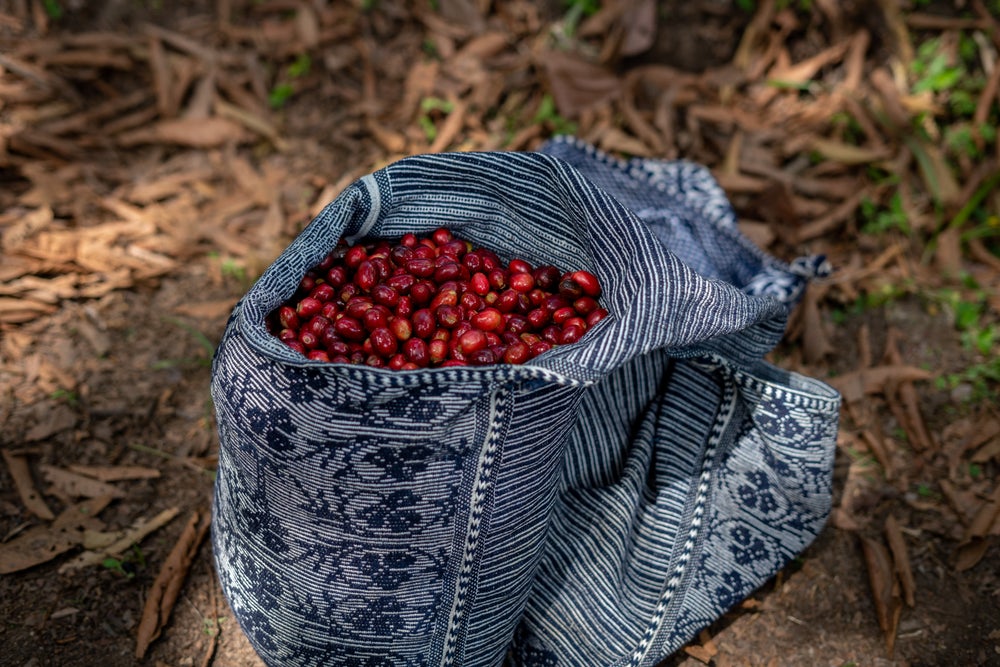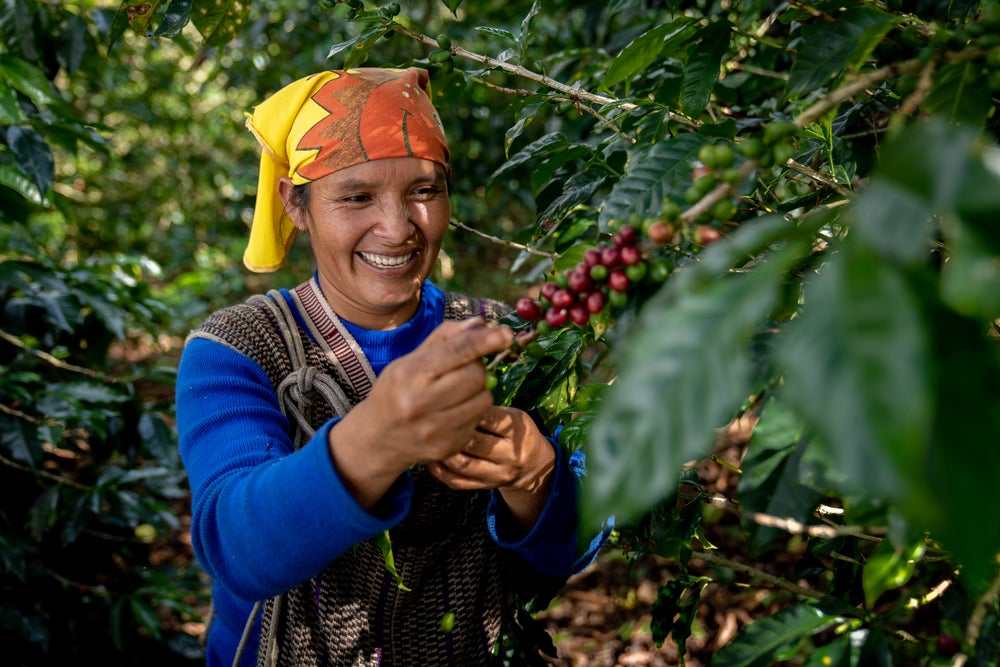About This Coffee
Cafe Monteverde was started by husband-wife duo, Alfonso Tejada and Karen Araoz. While both Tejada and Araoz grew up in Rodriguez de Mendoza, they previously owned a travel agency together in Lima. After selling their agency, the two purchased Finca Timbuyacu and moved back to their hometown.
Finca Timbuyacu became the foundation of Cafe Monteverde, which they established in 2003. The pair were committed to improving social conditions for other small producers in the region, and they envisaged the business as a means of helping producers in the region to market their coffee in better conditions. Since it was founded, Café Monteverde has been establishing relationships with a wide range of producers and producer organisations. In addition to producing a range of their own micro-lots from Finca Timbuyacu, they market group lots such as this one and provide a range of services for the producers with whom they work.
Perhaps most significant is the role Finca Timbuyacu plays as a model farm. Members can visit to learn about farm management and harvesting as well as post-harvest practices like fermentation, washing and different drying methods. Finca Timbuyacu specializes in teaching members a variety of skills that will lift their quality of production to the highest level possible.
Monteverde helps member farms take steps to ensure good soil management and conservation. Members plant living barriers and diverse shade trees and add contour lines to reduce erosion. Araoz and Tejada are also taking an active role in the communities of their producers. In 2010, the organisation collectively purchased a playground for children in one producer community. Then, in 2014, they purchased 40 new mattresses for children whose sleeping conditions were substandard.
Harvest & Post-Harvest
Each producer harvests and processes their own cherry. Cherry is selectively handpicked. Only ripe cherry is picked. While each farmer’s specific processing methods may vary, the general structure of processing remains similar.
First, cherry is pulped with either a manual or motorised pulper. Then, the coffee is fermented in wooden crates or tub tanks for 12-18 hours. The beans are then washed with clean water, removing any remaining mucilage.
Drying can take place on cement pads, trays, pallets, solar tents or roofs. Drying time varies according to farm location and drying space, but all parchment is dried to 12% moisture level. Following drying, producers pack parchment in polypropylene bags stored on wooden pallets in a safe, well-ventilated area. They are then transported to the collection centre where they are evaluated.
Each lot is evaluated through a 300 gram sample. Beans are checked for defects, quality, color, moisture content and more. Once accepted, beans are milled and prepared for export.
Coffee in Peru
Peru holds exceptional promise as a producer of high-quality coffees. The country is the largest exporter of organic Arabica coffee globally. With extremely high altitudes and fertile soils, the country’s smallholder farmers also produce some stunning specialty coffees.
Though coffee arrived in Peru in the 1700s, very little coffee was exported until the late 1800s. Until that point, most coffee produced in Peru was consumed locally. When coffee leaf rust hit Indonesia in the late 1800s, a country central to European coffee imports at the time, Europeans began searching elsewhere for their fix. Peru was a perfect option.
Between the late 1800s and the first World War, European interests invested significant resources into coffee production in Peru. However, with the advent of the two World Wars, England and other European powers became weakened and took a less colonialist perspective. When the British and other European land owners left, their land was purchased by the government and redistributed to locals. The Peruvian government repurchased the 2 million hectares previously granted to England and distributed the lands to thousands of local farmers. Many of these farmers later grew coffee on the lands they received.
Today, Peruvian coffee growers are overwhelmingly small scale. Farmers in Peru usually process their coffee on their own farms. Most coffee is Fully washed. Cherry is usually pulped, fermented and dried in the sun on raised beds or drying sheds. Drying greenhouses and parabolic beds are becoming more common as farmers pivot towards specialty markets.
After drying, coffee will then be sold in parchment to the cooperative. Producers who are not members of a cooperative will usually sell to a middleman.
The remoteness of farms combined with their small size means that producers need either middlemen or cooperatives to help get their coffee to market. Cooperative membership protects farmers greatly from exploitation and can make a huge difference to income from coffee. Nonetheless, currently only around 15-25% of smallholder farmers have joined a coop group.

